|
Whatever that is happening around us, the show must go on. Life must go on, and how nice it would be to work from home – the very dream we all had when we were ‘stuck’ in the office. Now, we find ourselves at home, not alone; but with everyone! And you think, I have my work tasks to manage (and look at all those household tasks!), my unsatisfied needs to manage (stability, freedom, peace), and on top of that the needs and demands of everyone else in the family (food, safety, entertainment, education, connection and the list goes on)! How do I survive the entire circuit breaker period?? And perhaps now is the time to step back and reflect – How have I been managing it and how coordinated have we been as a family? Family & Team DynamicsIn the workplace, we question how well we work as a team to achieve goals, and what else we can do to make it a better place for all of us since we spend so much time there. Now the work environment has changed, and where work is concerned, it is taking the whole notion of teamwork beyond physical boundaries to the virtual space. Yay, new skillset! But let us refocus. The point is that you have teamwork experience. Let us see how we can apply it to the home setting. Do you remember Belbin’s nine team roles? Rethink our Family Roles Questions first. What is the role that you tend to be playing or have been playing? Have you been carrying everything upon yourself or not contributing at all? How can we be more engaged and also engage our family members in this period? Here, we present the first five steps for doing so, and you can enlist the support of another person in the family to get it started. Over time, you might see the inclinations of each family member for specific roles and have them step up and take ownership. Talk about empowering people and supporting one another for growth. It is never too early for anyone to start learning about teamwork! Step 1 – Coordinator & Shaper: Set an Intention Let us face it. Some things are just not working out around the household at this point and we need the effort of everybody to make a change. Anyone can take on this role to initiate a family meeting to share some observations on what has been happening and rally everyone to do something about it. Anyone may be aware of what is not working and can challenge the norm of how things are being carried out. Sitting down for a family meeting to get conversations going and have everyone be aligned is surely the first step of harmonising. Note: Everyone needs to be involved because we are a family and that is what being family is about. We stick together through thick and thin and work things out. It is the individual responsibility to the family. Step 2 – Team Worker & Specialist: Share & Listen Respectfully Everyone is struggling and no one is unique in having issues. When the things you have to handle is bigger than you can imagine, you tend to focus a lot more on your needs. However, everyone has needs and we request that everyone zoom out a little bit so that we can all be there as family for one another. Being there for one another demands that we listen without judgment as we provide one another with the space to share and vent. It involves acknowledging the challenges that we each face without imposing our subjective views. Listen and avert friction. This is the perfect time to engage on a deeper level with family members as we bring each other into our respective worlds and share with them authentically and vulnerably the key issues we are dealing with, and the support we seek. Every individual is a specialist of their own feelings, needs and experience. Many a time, everyone just needs time and space to process their inner world. Note: Be at one with all the emotions that are surfacing. Give time for words to sink in and feelings to settle. Do not react based on emotions. Instead, take note of everyone’s needs and focus on the objective of the family meeting – to work things through together. Step 3: Resource Investigator & Plant: Support with Possibilities When things get tough, the tough gets going; and one way is to increase optimism when we see and share possibilities. When we get stuck in a challenge, we some times cannot see an alternative way out. However, with the power and support of the family, we can brainstorm ideas together. For each issue that was highlighted in step 2, we can brainstorm new ways of approaching it and also share ways that others we know have approached it. All this while, be sure to avoid the words “You should”. Use phrases like “Perhaps you could” or “Here are some things you might like to try”. Note: Supporting others is not the same as imposing your way of doing things. Even as family members, we need to respect that we each have our own way of thinking and doing. Instead of telling them what and how to do, share with them the possibilities and let them decide on their own. Step 4: Monitor Evaluator & Implementer: Converging to a Plan Depending on the issues and ideas raised, the family can evaluate the options together and figure out the best strategy moving forward. Some trade-offs might have to be made to achieve the intention. Here is where we may recognise the strengths of everyone within the household and empower everyone to be able to take ownership and implement. Alternatively, each individual is to weigh up the options presented, internalise it and share a personal strategy that they will be taking. They can also enlist the help of anyone required for their plan. In verbalising it, they become more committed to their plan of action. Step 5: Complete Finisher & Coordinator: Action & Accountability Finally, ensure that everyone’s needs have been addressed and objectives have been met. Here, you might want to take on the additional step of ensuring everyone knows what they need to do and discussing how everyone would stay committed to their actions. Then, appreciate one another and positively reinforce one another, before agreeing on the time for the next family conversation. Then, push forth with the workable strategy mentioned in step 4 and implement it. The nine team roles work well in teams in the workplace, it can work well at home too. As family members, let us understand each other better, communicate, empathise and support one another through this period. Let us kickstart the process and take on more team roles within the family. Let us stay #familyunited. You are never too young to learn and never too old to change - President Thomas S. Monson AuthorShamantha Yan is cofounder and an ICF Certified Coach and trainer of Growthbeans. She is also an Emotional Intelligence and Cultural Intelligence coach, Emergenetics and ACTA certified and a Reiki Practitioner. She is also Director of Savoir Asia Consulting Pte Ltd.
1 Comment
“ I just feel like slamming the table or shouting at people. Different things can make me feel this way“. The bespectacled cheerful looking man, Andy (not his real name), a professional shared. Behind his smile and twinkling eyes, it was impossible to tell that he was struggling with anger issues. His only consolation so far is that he has been able to hide it from his colleagues. Andy is not alone in experiencing this, and many of us might be facing the same thing. Whether it is at the workplace or at home, difficulty managing one’s anger can lead to undesired consequences. Not being able to deal with anger can also take a toll on our physical, emotional and mental health while affecting our work and relationships. Of all the checklists that we have, the one checklist that we should really be keeping is our Anger Checklist. The key objective is for us to stay on top of our emotions and relationships, by being aware of what makes us angry and how that might impact our health and the way we respond to others. The following is an example. Do you resonate with some of points? What makes you angry today? Exploring Anger Anger is a normal human response which can vary in intensity from mild annoyance to rage. Being angry may be viewed as a positive emotion when it can drive us to spark positive change or to stand up for something or someone. However, when we feel targeted, it can quickly spiral into a negative emotion that if left ignored and unchecked, can erupt into undesirable aggressive or avoidance behaviors. A secondary emotion, anger possesses a protective function to cover up a more raw and vulnerable emotion that is hidden under the surface. The Gottman Institute’s Anger Iceberg provides a good illustration of this. Being able to recognize our anger and explore the underlying emotions can help us understand ourselves better. When Andy took time to explore beneath the iceberg, he realized his anger was linked to a sense of urgency to get things done and not waste time. He was worried that any delays would cause him to miss his milestones. This would get him into trouble with his boss. Recognizing this, Andy was able to take steps to ensure sufficient buffer time was included at the planning stage to account for any loss of time that was not within his control. He also started providing more updates to his boss and colleagues to manage their expectations. Trying to identify the root emotion may not be easy as we tend to be more attuned to the surface emotion of anger. Here are some tips to uncover what is beneath the surface and to deal with it. Uncovering the Root of Your Anger 1. Acknowledge and Communicate Your Anger
2. Identify Underlying Emotions
3. Be Curious
4. Identify your Need
If you know of anyone with anger management issues in the office, do not dismiss them or cast them aside as that will only intensify their emotions. Support them by helping them to uncover their triggers and their underlying emotions. AuthorShane Yan is cofounder and an ICF certified coach and trainer of Growthbeans. She is an author of Wide Asleep Sound Awake – a self-awareness activity book that unleashes the potential of individuals, She is also Mental Toughness (MTQ-48) and Emergenetics Certified, and a Reiki Practitioner. Whether we like it or not, we are all grieving. Grieving not just for the loss of lives around the world. Grieving not just for the loss of jobs and seeing the people around us be impacted, but grieving for the loss of structure, freedom, interaction and a life we once knew. What makes it worse is the feeling that there seems to be nothing we can do about the situation. Everywhere we turn, the situation seems dire. During this covid-19 period, as news and government measures hit us wave after wave, businesses, people and families scramble to react and adjust accordingly. So much has gone into the doing that we barely had time to sit with the festering emotions that have till now been left unaddressed. All this while, these emotions might be taking a shape of its own, rising like darkness to overwhelm us, magnifying negativity and choking us in fear and anxiety. When we finally have a chance to check in, we might not be prepared to cope with the rush of emotions. Some of us might be confronting such emotions for the first time, not necessary those of our own, but that of others. Worse still, the demands are all pouring in at the same time. You’ve only just walked a slope, but suddenly you have to scale a mountain. There is pressure mounting all around, as you struggle to cope with your emotions, the emotions of your love ones, and the emotions of the people you report to and of those who report to you. You feel torn and on the brink of despair. You cannot just direct emotions to stop flowing. What can you do? COPING WITH EMOTIONS 1. Breathe Take in deep breaths to calm your senses. Breathing is a great way to regulate your emotions, and it gives you sufficient time to get past system 1 thinking to system 2 thinking – the logical part of the brain that rationalises with self awareness and control. This enables you to take a step back to begin to process all the emotional data that you observe from yourself and others. 2. Understand & Acknowledge the Emotion Having conversations when emotions are heated is like entering a minefield amidst a war of words. Proceed gingerly. A wrong footing would spark off an explosion. What is best to do at this point is to gently identify the hidden mines. In other words, you need to understand the emotion and acknowledge it. Whether it is your own emotion or that of another, this enables one to feel understood. Think of this as the key step to defuse the mine. You can think about how the mine got there and what to do with the mine after, but the first step is to defuse it. Being a bomb disposal technician in this case is akin to being an emotion detective who puts the pieces of the emotion puzzle together. You don’t cut any wires but you identify the ‘wires’ and you form connections to enable the emotion(s) to be processed. With tenderness, listen to what is being said and what is being unsaid, and identify sources of concerns. Take note of your observations and clarify the emotions. You would know that you have gotten it right when the weight of the world seems to have been lifted off and replaced with gratitude. 3. Define the Desired Outcome Here is when you can begin to explore how the mine got activated and what can be done to dispose of it. Every unpleasant emotion has an underlying unaddressed need. Find out what is missing and what it will take to feel better in the current situation.Probe further, but with sensitivity, and the response is likely to reveal the desired outcome. If you know what you/they are looking for, you no longer have to second-guess and know the next course of action. 4. Explore the Possibilities Just as there are many ways to skin a cat, there are many ways to achieve an ideal outcome. Explore the pros and cons of each option and, all things considered, identify one that would work best. 5. Get into Action Our emotions tell us something. When we can decipher it, we can be more empowered to put the control back into our hands to take action and make a change for ourselves. With these five steps, you are now more empowered to cope and support the emotions of yourself and others. Just a tip, handle one set of emotions at a time. It is always better to start off with your own, so that you calm yourself down first and ensure that you are in the right frame of mind before you open the doors to others. After all, your emotions can also impact others. Everything is temporary. Emotions, thoughts, people and scenery. Do not become attached. Just flow with it. - Anonymous AuthorShamantha Yan is cofounder and an ICF Certified Coach and trainer of Growthbeans. She is also an Emotional Intelligence and Cultural Intelligence coach, Emergenetics and ACTA certified and a Reiki Practitioner. She is also Director of Savoir Asia Consulting Pte Ltd. If increasing employee engagement is top on your mind, read on. Giving employees meaningful work, ensuring they are incentivized right, equipping them with the right skills, providing opportunities for development and stretched growth, having their managers check in on them and having frequent discussions. While these can help to increase engagement, they may not be sufficient. Let us consider this. How frequently are employees afraid to express disagreement with their managers? To what extent do employees feel that their views are appreciated and their views included? To what extent do employees feel connected to their colleagues, the workplace or the organizational goals? These presents all the softer side of engagement, which needs time and effort to address. To achieve this, a cultural transformation may be required, and creating safe spaces might be the answer you are looking for. IMPACT OF CULTURE TRANSFORMATION First, culture transformation impacts both employee engagement as well as business performance. The impact of culture transformation on business performance is well illustrated by how Korean Air picked itself up in the 1990s. In the late 1980s and throughout 1990s, Korean Air was plagued by a series of fatal air crashes. Korean Air planes were crashing so often that several prominent airlines (such as Delta Air Lines and Air France) suspended their flying partnership with Korean Air in early 1999. It prompted the Korean president at that time, Kim Dae-jung, to switch the presidential plane from Korean Air to its rival Asiana, with a public statement: “The issue of Korean Air is not a matter of an individual company but a matter of the whole country”. That very year, Korean Air turned itself around. Since 1999, Korean Air safety records have been spotless. In 2006, Korean Air was given the Phoenix Award by Air Transport World in recognition for its dramatic transformation. Not only was the change dramatic, the transformation has proven to be lasting and sustained. What contributed to such a miraculous turnaround? CREATION OF SAFE SPACES Culture influences values in the workplace, and behaviors in a team are influenced by the norms of the prevailing culture. Dutch psychologist Professor Geert Hofstede’s Hofstede model includes the power distance index, which expresses the degree to which the less powerful members of a society accept and expect that power is distributed unequally. People in societies exhibiting a large degree of Power Distance accept a hierarchical order in which everybody has a place and which needs no further justification. In relation to Korean Air, analysis of the “black box” cockpit recorders of all Korean Air flights that have crashed or experienced near miss – highlighted how junior co-pilots and first officers refrained from pointing out errors made by the Captains. Social hierarchy and deference to seniors in the Korean culture compelled junior officers to accept the Captain’s decisions without questioning. Even after repeated mistakes made by the Captain, junior officers refrain from speaking up. When hierarchy affects the ability for open communication, inclusivity and team work to happen, a safe space is compromised. The idea of a safe space originated from minority groups and marginalised individuals who decided to come together to communicate their experiences with marginalization without fear of being made to feel uncomfortable, unwelcome or challenged on account of gender, race/ethnicity, sexual orientation, gender identity or expression, cultural background, age, or physical or mental ability. Safe space, as referred to here, is any social interaction where the parties feel included, do not feel judged, feel at ease and respected being themselves, sharing a common purpose and confident that each individual has the capability and willingness to contribute. In such a safe space, everyone has a voice, all are treated as equals and candid communication is the norm. In order to establish the safe space where employees share a common purpose to drive business performance, and in this case, flight safety, Korean Air made two significant moves. First Move: Create a safe space in the cockpit of every Korean Air Flight All pilots and cockpit crew of Korean Air underwent rigorous cultural reconditioning and retraining that support the creation of safe space in the cockpit, adopting behavioral norms that significantly reduce the power distance between them. Every time crew members step into the cockpit, irrespective of whether they have worked together previously, the entire crew will, behave and act as equals, engage in the same endeavor to fly safely. The captain act as “first among equals” when interacting with the other equals – appreciate their perspectives, respect their opinions, include their suggestions when making decisions and even be open to their checks and challenges – assured that the overriding purpose is to take the passengers to their destinations safely. The co-pilot and first officers feel safe enough to assert themselves, empowered to participate in decision making and respected in performing their role. Second Move: Remove hierarchy by making English the new language in Korean Air Given that clearly defined hierarchical gradients are inherent in the Korean language, it plays an integral role in the large power distance of the Korean culture. The use of English was a key part of the transformation process as it facilitated an identity shift of the cockpit crew, allowing them to discard the hierarchical roles expected by the Korean culture, and adopting a style of treating each other as equal in a safe space. Korean Air succeeded in transforming itself because it took the courageous step to acknowledge the pervasive influence a prevailing culture has on the way the key guardians (of a plane safety) relate to each other in the cockpit. The Koreans were willing to confront aspects of their cultural heritage that had outlived its usefulness and were unsuited in today’s aviation. Cockpit is a microcosm of a high performing unit with a clearly defined mission, its team dynamics parallel that of a corporate organization. Though the consequences of dysfunction in collaboration in an office may not be as dire and catastrophic, they are nonetheless sources of stress and employee disengagement. IMPORTANCE OF SAFE SPACES IN ORGANIZATIONS What we learnt from the transformation of Korean aviation industry is the capacity of safe spaces to unleash the willingness, capability and potential of every member in an organization to fully engage, contribute and collaborate. We also learn from the transformation of Korean Air that when operating within the context of a pervasive and disempowering culture of the broader organization, it is still possible to establish safe spaces within work cells, project teams, departments and business function units. There is potential in creating an inclusive safe space for everyone in an organization. A safe space in an organization engages employees to offer perspectives or ideas without fear of being judged, give constructive feedback without fear of retribution and participate in making decisions in areas where they have recognized strengths and where their work performance and job satisfaction are most affected. When executed effectively, a safe space can spark off a learning culture and a culture of growth mindset which is useful to engage employees and support them with their career growth, and drive innovation and transformation in the workplace. To execute a safe space effectively, it begins with the support of leadership who embrace a growth mindset; someone who recognizes that people can learn from mistakes when they put in effort and that learning and growing in a non-judgmental environment removes the fear of failure and group think. It is then sustained by tacitly agreed rules of engagement that safeguard confidentiality, honesty, empowerment and participation. Contact us to find out more about how to create safe spaces in your organization AuthorChan Wai Keong is an ICF Certified Coach and trainer of Growthbeans. With over 20 years of senior leadership experience, he focuses on Leadership development, Behavioral Change and Performance coaching. He is an Insight Discovery Licensed Practitioner, MBTI Accredited Administrator and Facilitator, NLP practitioner and administers Global Leadership Assessment 360. |
Archives
April 2023
Categories |


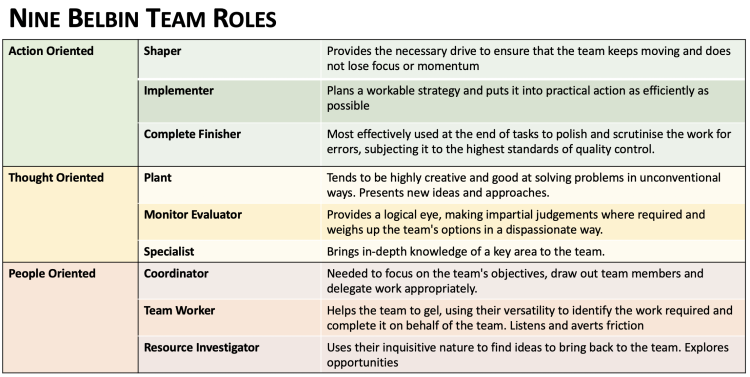
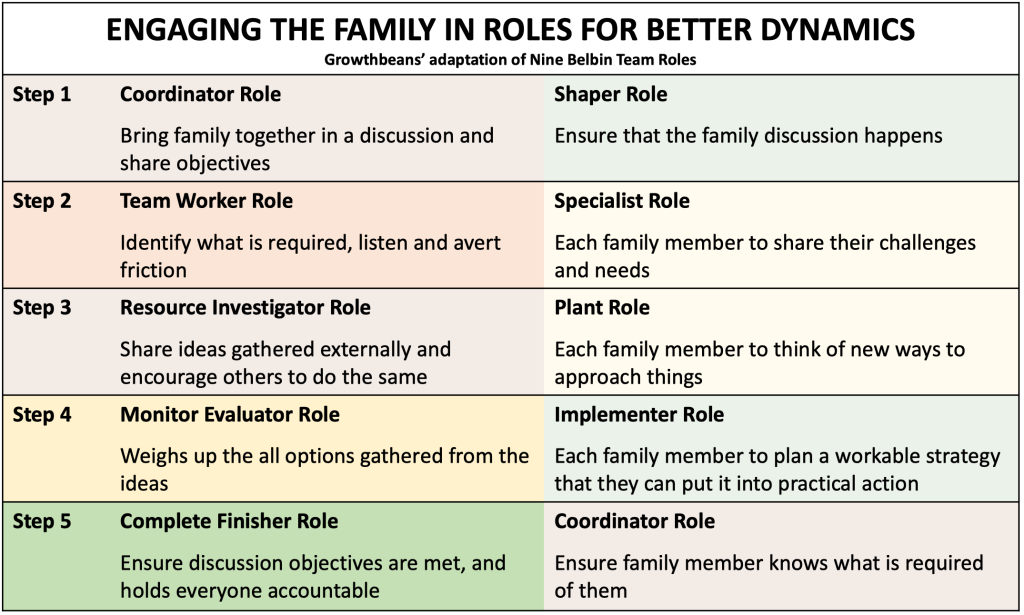

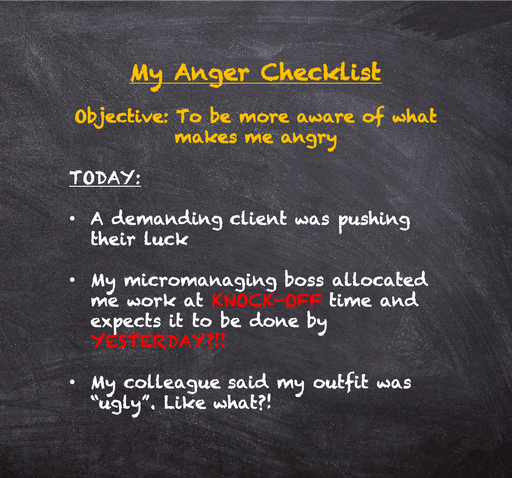
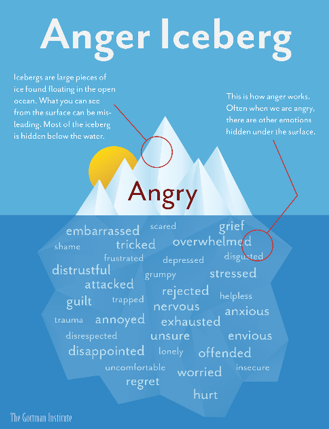

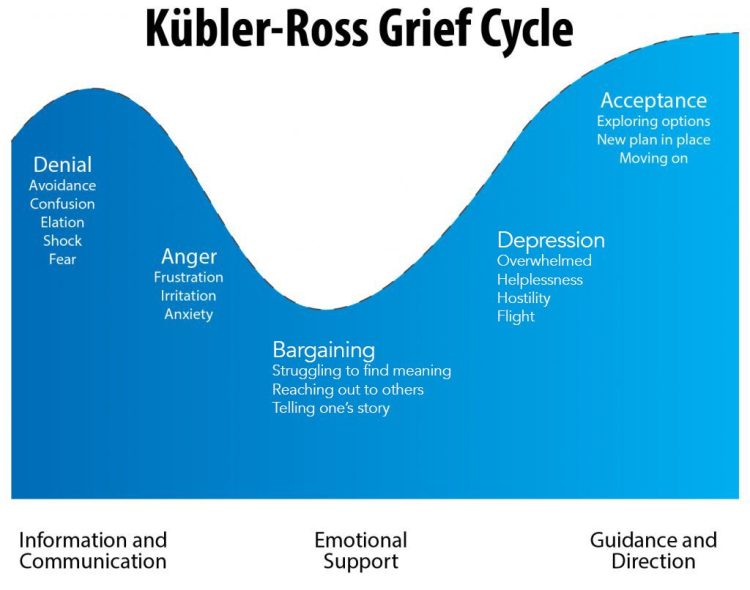

 RSS Feed
RSS Feed

